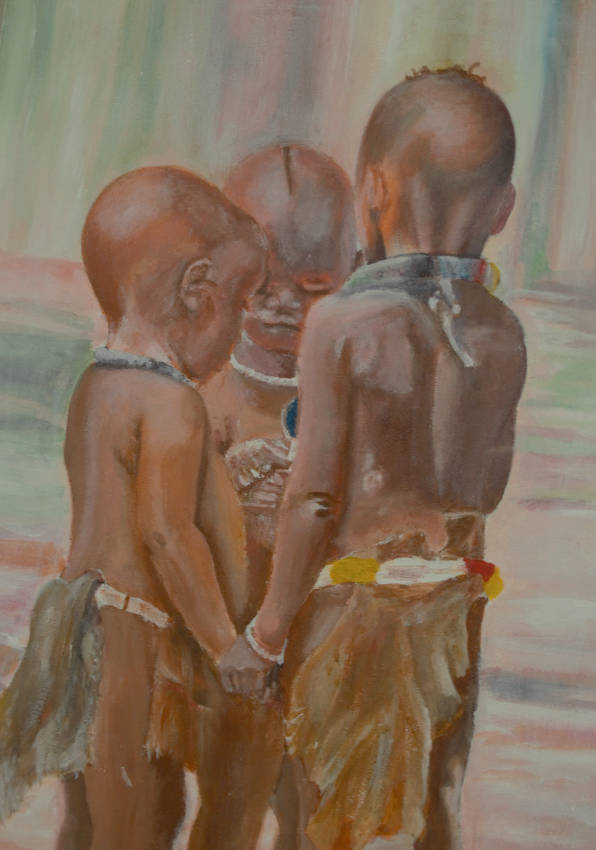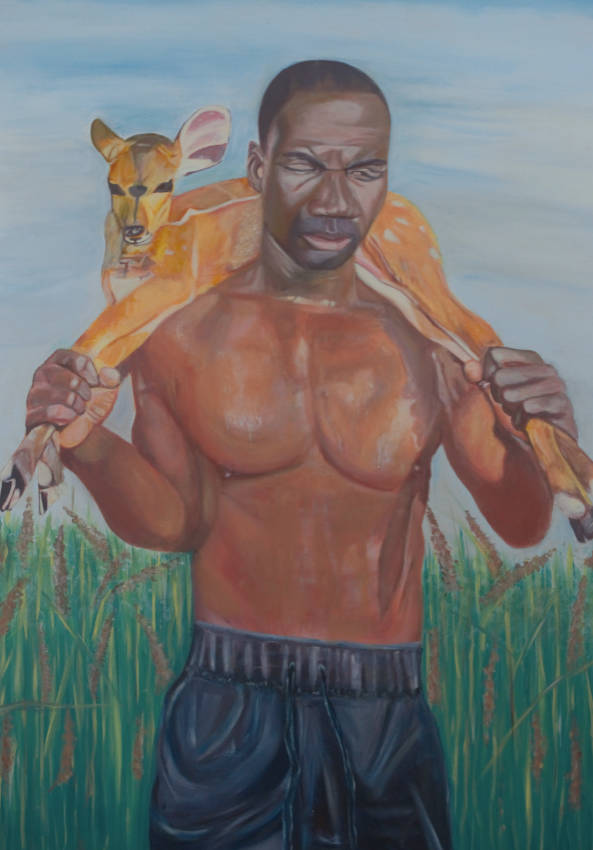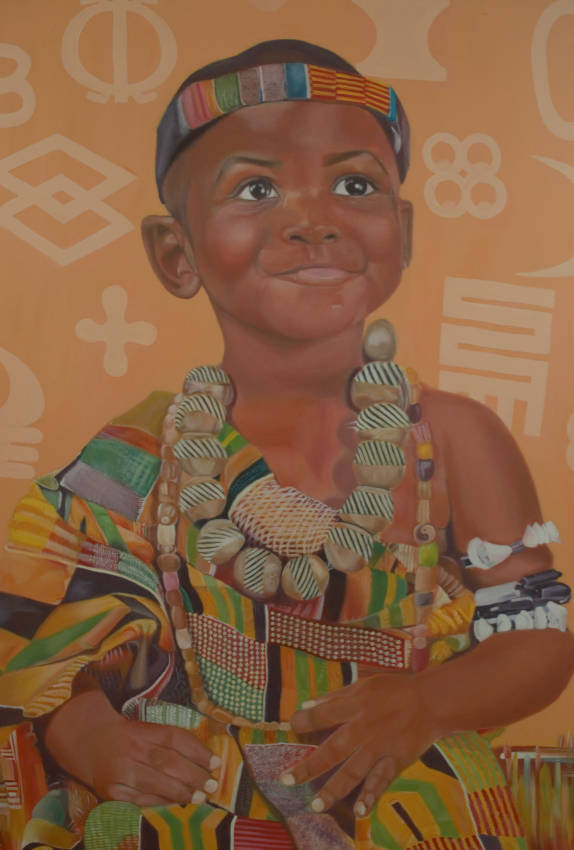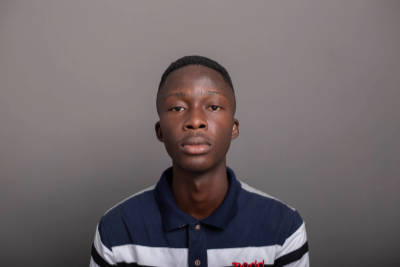
What faces do we idolize to the extent of identifying ourselves with? Are these what we want and seek to be associated with? Faces of conquests and imaginations? What relationship does these have with our cultural and social development? Exhibited in acrylic on canvas, exploration of techniques have led to a rendered representation of portraits of varied sizes. These paintings are in manifestation of my strife to look beyond the scenes of individualistic "colour".
“Let’s share” is the title of my first work which depicts three boys gathered around a blue lollipop. It sheds light on the selflessness and brotherhood of the Ghanaian, that is, the African. Painted in a fuzzy feel, the complete identity of the brothers are shrouded in mystery. In a traditional Ghanaian setting, the oldest in a group is to take charge sharing a given item. The earthly background is muted and distanced away from the boys. The composition generally creates an atmosphere where man lives in harmony with nature and its surroundings.

“I have it” is based on the Aboakyir (animal capture) festival celebrated by the Effutu people of Winneba in the Central Region of Ghana. The animal is seen as calm as it has lost majority of its energy in the chase by the hunters. There is that tension where the animal feels it’s doomed but has no way out because it is to be presented to the chiefs and people alive. The capturer appears worn out but he is comforted with his prized victory. The man’s bare chest shows the need for rejuvenating fresh air over his muddy and sweaty body in the obviously sunny weather. The firm grip of the animal’s legs over the shoulder of its capturer shows dominance in the victory won. The lower abdomen is slightly elongated to show his strength and agility. Representing the ups and downs of life is the shorts of the man with stiff and steep folds. The wavy scattered pattern of the grasses tends to signal a goodbye wave from its natural habitat to the unknown. “With proper planning, we can indeed conquer all our fears”.

“It’s coming” features the painting of a prince looking beyond the horizon. Filled with rich assorted colours, the typical Ghanaian (probably Akan) royalty is painted wearing the meticulously woven kente fabric. He has a small traditional incision at the edge of his left eye identifying him to a particular group, or as a treatment from an illness or misfortune. With cheeks raised, lips grimed and eyes sparkling, the kid is in great anticipation for something wonderful. The colorful headband and cowries-strapped armband radiate the power and wealth of the boy-king. With the sharp contrast between the bigger gold stripped necklace and the long thin one, the virtue of the differences in life is portrayed; even the fingers of the same hand are not the same. With the yin and yang captured on the necklace, it shows the need for cultural tolerance in a dynamic world of individual differences. The kente is a playground for artistic explorations as different colours and techniques were used to achieve the richness and bend of the cloth in relation to this harsh world. The kente is draped over the right shoulder instead of the conventional left shoulder to strengthen the fact that you change where the need be. The whole composition is made larger than the canvas to show that there is more to life than those that meets the eye. The background is marked with Adinkra symbols that tell the stories of life. With symbols like “Biribi wo suro” (Something is in the heavens), “Akoben” (War horn), “Epa” (Handcuffs), “Ntesie” (Hiding things learnt) and “Nkyinkyia” (Turns), they show how we adapt to different situations in life.

I am Eric Tettey Mortagah. Born on the 28th of July, 2001 to Mr. Samuel Mortagah and Mrs. Theresa Mortagah. I hail from Agortime Afegame in the Volta Region of Ghana. I had my lower primary education in Accra and upper primary education to senior high school in Winneba. Currently in level 100, I am pursuing painting and sculpture at the University of Education, Winneba.
